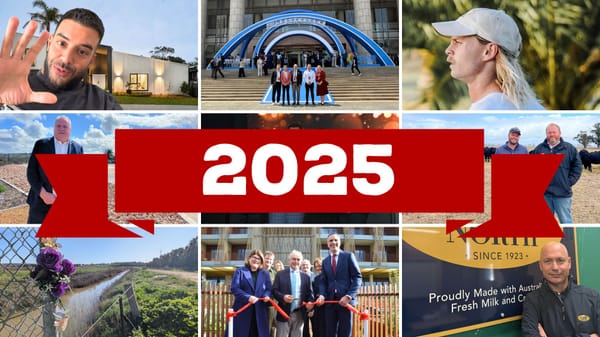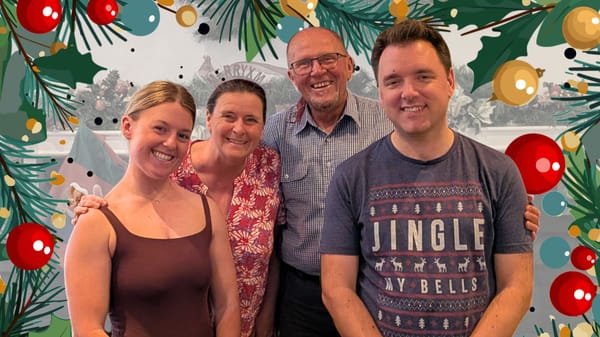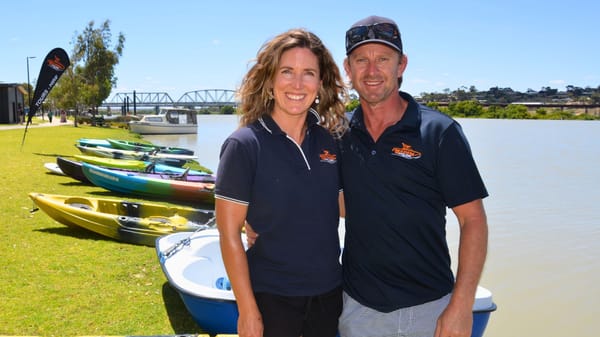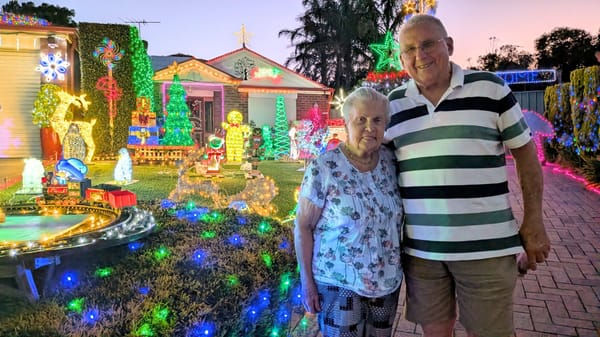Better clothes, recycling, political pressure: how MBHS students can fight climate change
What are the experts telling Murray Bridge High School's year 8 and 9 students? We went to find out.
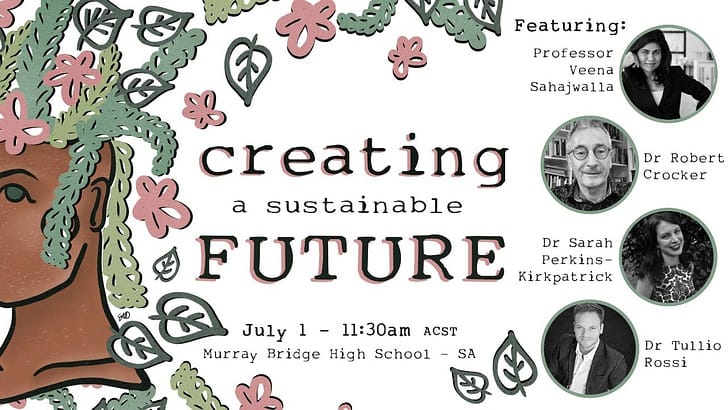
This story was originally published behind Murray Bridge News’ paywall. Paywalled stories are unlocked four weeks after publication. Can’t wait that long? Subscribe here.
Buying less cheap clothing, recycling more and pressuring governments are among the most effective ways for young people to fight climate change, Murray Bridge high schoolers have heard.
Experts from Sydney and Adelaide video-called in to Murray Bridge High on Wednesday to talk to year 8 and 9 students about creating a sustainable future.
The panel could just as easily have assembled for an episode of the ABC show Q&A: heatwave researcher Sarah Perkins-Kirkpatrick, sustainable development expert Robert Crocker, recycling scientist Veena Sahajwalla and science communicator Tullio Rossi.
It was a Q&A session, too: students asked the questions and got answers directly from some of Australia's top minds – see below.
The event took place against a backdrop of a global climate continuing to change even as COVID-19 forces so many people to stay at home: temperatures almost 20 degrees higher than normal in the Arctic, and the possibility of up to seven degrees of warming by the end of the students' lifetimes.
“Unfortunately ... this will be the biggest issue that all of you will have to face in your lifetime,” Dr Crocker warned.
On Thursday, the same students will be asked to suggest their own solutions to the world's problems.
In the meantime, here's what they learned.
Clark Adora asked:
Why is climate change a problem?
The natural greenhouse effect was good, because it made our Earth warm and habitable, said Dr Perkins-Kirkpatrick.
But greenhouse gas emissions were currently causing the climate to change at a pace not seen in the past million years.
Samuel Montgomery-Pittaway asked:
What's the difference between climate and weather?
Weather was day-to-day, Dr Crocker said; climate was year-to-year and focused on long-term trends.
Samuel also asked:
How do we know what greenhouse gas levels were like in the past?
Through various methods, Dr Perkins-Kirkpatrick said, including by measuring the mix of gases in air bubbles trapped in ice in places like Greenland, which were sometimes older than human civilisation.
In parts of the world, instrumental records also dated back to the 18th century.
Miss Hein's year 8 class asked:
How do we know humans are causing climate change?
The isotopes of carbon dioxide released when fossil fuels are burnt were different to those released naturally from decaying trees or the ocean, Dr Perkins-Kirkpatrick said – they left a “fingerprint” that could be detected by scientists.
Lincoln Baker asked:
What are the main sources of carbon emissions?
Agriculture, but mainly the burning of fossil fuels, especially in cars and electricity generation.
Professor Sahajwalla said consumerism was also a factor – the more goods people consumed, the more needed to be produced, and the more resources and energy had to be used.
Take clothes, for example: polyester was made from petroleum, so the more frequently we bought and replaced cheap clothes, the more fossil fuels were being used up.
“The less we consume, the more we recycle, the longer our products last, what we're doing is taking back control, back in our hands, slowing down consumption,” she said.
Riley Lienert asked:
What are we currently doing to fight climate change in Australia?
The panellists paused just long enough for a murmur to pass through the gymnasium.
“We're not doing enough,” Dr Perkins-Kirkpatrick said.
“I hazard to be a bit political ... but there's not enough coming from our political leaders.
“Net zero (emissions) by 2050, that's not the path we're heading on.”
State governments were doing what they could, Dr Crocker said – and businesses were, too, Professor Sahajwalla said – but the federal government needed to lead.
“It's very, very important to stand up to them and to say 'we're all watching you, we're all listening'," Dr Crocker said.
“We can't leave it all up to industry; they can do a lot, but ultimately it's a partnership between all of us, because this is a global system.
“The problem is in the system itself: the way we do things, the way we make things, the way we generate energy, all that needs to be cleaned up and changed.
“Unfortunately ... this will be the biggest issue that all of you will have to face in your lifetime.”
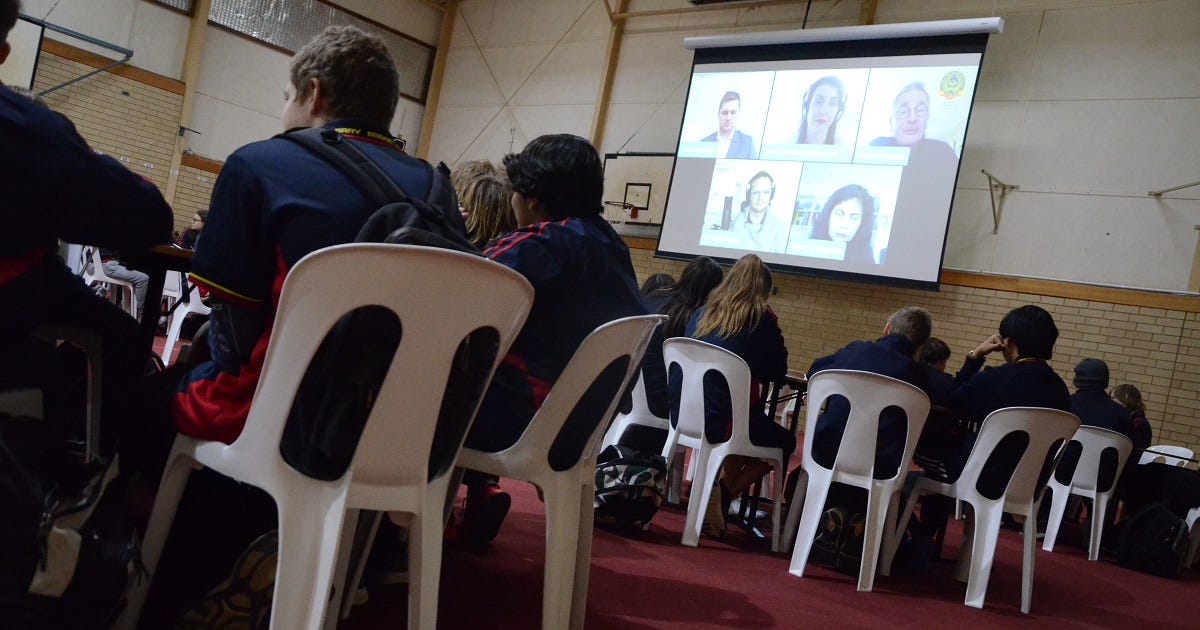
Adela Chewings asked:
How will the global pandemic affect climate change?
There had been a slight decrease in greenhouse gas emissions in recent months, Dr Perkins-Kirkpatrick said, but “not enough to make a dent”.
More promising were the behavioural changes COVID-19 had brought about, with people realising they might not need to commute long distances to work.
Katelyn Mitchell asked:
If something is done about climate change now, how long will it take for the environment to get better?
A sharp drop in emissions now would allow temperatures to fall within 10 to 20 years, Dr Perkins-Kirkpatrick said.
But the effect of greenhouse gases already in the atmosphere would continue to be felt for centuries.
Alicia Hutchings asked:
What can we do to ensure a sustainable future?
Young people's choices could add up to make a difference, but could also inspire action by their parents and friends, Professor Sahajwalla said.
“Stop and ask that question: do I really need a new pair of clothing items, do I really need a new toy?” she said.
“Question how you consume and how you then inspire others to do the right thing.”
Buying three items for $10 might sound good, Dr Crocker said, but they might not last as long and their owners might not value them enough to keep them.
There was no point in calling people stupid for doing the wrong thing, though, he said – only patience and tolerance would change people's behaviour.
Hayden Cormack asked:
How are you trying to solve climate change?
Buying longer-lasting clothes helped, Dr Rossi said.
So did eating more sustainable food: not necessarily going vegan, but perhaps choosing things like kangaroo meat instead of beef.
Changing a personal habit once was good, Dr Perkins-Kirkpatrick said, but reconsidering and changing again was better – for example, by not just putting glass and plastic in a recycling bin, but by taking plastic bags to the recycling points available at Woolworths.
Salee Baker asked:
How do wind turbines and solar plants affect birds and animals?
Wind turbines could kill birds, Dr Crocker admitted.
But oil, gas and coal were much more destructive for the environment, he said, and therefore worse for birds and animals – “that is really worth keeping in mind when you listen to people complaining about (turbines)”.
Video: Murray Bridge High School/Youtube. Photo: Peri Strathearn.


